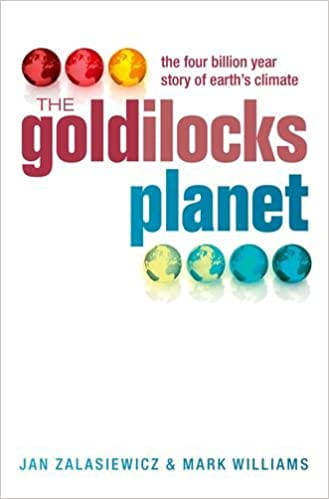As I continue to write about listening to The Goldilocks Planet, now is a good time to discuss Earth’s geologic eons, eras, periods, and epochs. Please see the U.S.G.S. Divisions of Geologic Time” to help. These markers from one time to the next tell quite a story. Except for some ancient zircons from the Hadean, we don’t have much ancient strata to study until the Archean eon began. “[These] fossilized landscapes…may be found in the hearts of the most ancient continents, in Greenland, Canada, and Australia. They are the remains of shallow sea floors, lakes, and rivers, between 3 and 3.8 billion years old.” Earth had water!
We also had life on Earth by that time, and that caused a problem called the Great Oxygenation Event. As I stated in part 1, our planet’s climate occurs because of the interactions of biology, geology, and astronomy. Here are just a few examples: Carbon gets buried as trees die & gradually turn to coal cooling the planet, huge volcanic eruptions release carbon dioxide making the planet hotter, a meteor crashes into the Yucatan killing the non-avian dinosaurs & cooling the planet, the uplift of the Himalayas causes the planet to cool, 100,000 year long Milankovitch cycles cause climate change throughout the planet, and now humans are releasing huge amounts of carbon by using coal and other fossil fuels.
Don’t take my word for this, read/listen to the book to learn more.
